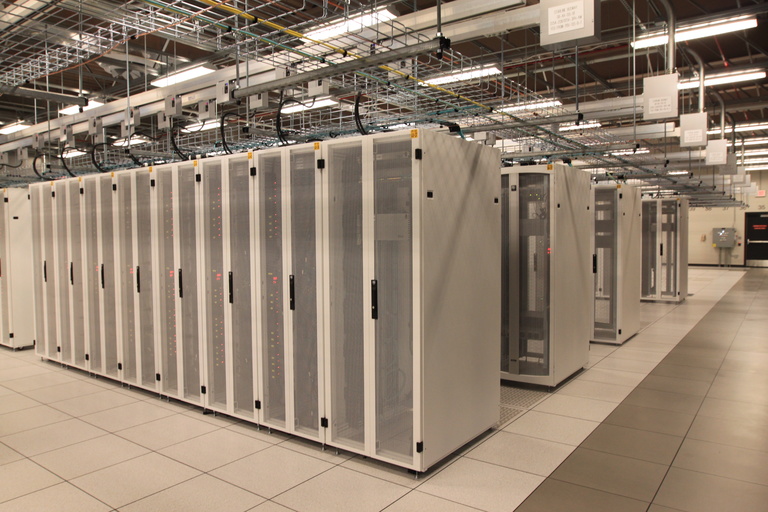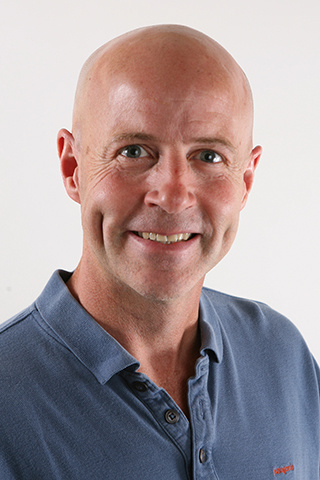When University of Iowa Professor of Chemistry Claudio Margulis was initially approached about consolidating his research clusters from the chemistry server rooms to central facilities, he was apprehensive.

“Each research group with a heavy computational component has specific needs, and it was not always clear how one could make these needs fit within the context of the TIER,” says Margulis, whose research group focuses on the structure and dynamics of novel materials and the association of sugars and proteins.
But that’s where Margulis says the College of Liberal Arts and Sciences’ IT Unix group, led by J.J. Urich, played a crucial role.
“Our computers are what laboratory equipment is to others. Each chemistry laboratory is unique and so are our computational needs,” Margulis says. “Urich understands this and has worked with others at the data center to make this work great. My group and I in particular thank all of them for that. The most important aspect of what they have accomplished is high efficiency without losing perspective of the unique needs of researchers on campus.”
Claudio Margulis, Chemistry
"The most important aspect of what they have accomplished is high efficiency without losing perspective of the unique needs of researchers on campus." —
The Data Centers and Servers Project kicked off before TIER, as the UI looked to transition servers to consolidated data centers and repurpose vacated server rooms. It’s now one of the 16 OneIT@Iowa initiatives.
The project team is working through a list of roughly 1,000 servers on campus, aiming to consolidate over 46 server rooms and closets to a significantly smaller number of centrally governed, managed, and supported multi-tenant data centers.
In chemistry alone, the project team has consolidated 97 systems, migrating 375 terabytes of data to central facilities. That opened up three server rooms, freeing up 740 square feet of space in the Chemistry Building.
FAQ
How does the project team work with IT staff/researchers to ensure a smooth transition?
One of the keys to a successful server room migration is the OneIT DC SC team's commitment to working in partnership with the departmental IT and faculty/researchers. Building relationships and working collaboratively ensures that the consolidated service will meet or exceed user expectations.
Initial sentiments toward consolidation aren't always enthusiastic, but to date all consolidations have resulted in a win–win for the partners involved. The project team found that in some cases, people weren't aware of all the different IT service offerings available to them. The team enjoys working with researchers and server room owners to review the technologies being used. Collectively, they’re able to find creative solutions to IT needs that save the institution money but also save the researcher/department time and money.
More…
Closing those server rooms also enabled the shutdown of a 20-ton and 10-ton computer room air chiller (CRAC), spelling big electrical, mechanical, and equipment-maintenance cost savings of $102,000 annually.

“This project creates significant annual cost savings without forcing anyone to compromise on data center services,” says IT Manager Jerry Protheroe. “Departments don’t need to give up anything; in fact, the service they’re getting is even better because the Information Technology Facility (ITF) is designed for high reliability, availability, and security.”
Urich, director of research, Unix systems, and infrastructure for CLAS, says momentum behind the project is building, with work already underway in biology, physics, art, law, engineering, public health, and with individual researchers.
He added that the success of the project wouldn’t have been possible without the collaboration of multiple team members from CLAS and ITS, including Protheroe, the local CLAS consultants, CLAS Windows Systems Administrator Rick Bennett, and CLAS Senior IT Director Lance Bolton.
“Much work was done to review service offerings in chemistry, updated offerings in ITS around High Performance Computing (HPC), and storage offerings and virtualization software, as well as leveraging existing Windows and Mac offerings in the college,” says Urich. “There were many people who helped pull this off.”
Ultimately, Margulis says the team’s work has been invaluable, creating a smooth, almost unnoticed transition to central enterprise facilities.
“They understood the scope of our needs in terms of software, hardware, storage, and management and have facilitated every aspect of our move to the data center,” Margulis says.
Visit the TIER website for updates on TIER initiatives and success stories.
Have questions? Want to get involved? Get in touch with the TIER leadership team.